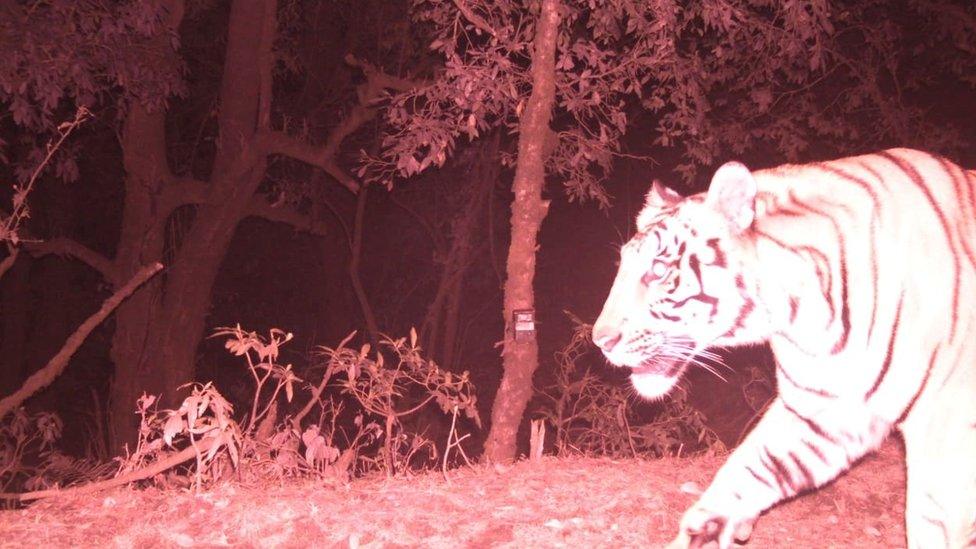Rare animals have been caught all over the world on special hidden cameras
- Published

This night vision image of a tiger was the first time in Nepal that this iconic big cat was caught on a camera trap at an altitude of around 2500 metres. It highlighted that tigers are wide-ranging and highly adaptable, willing to move into new areas if they can pass safely through a landscape and find enough food, shelter and water to survive - even at higher elevations
Say hello to the saiga antelope (saiga tatarica) in Russia. This image of the antelope with its magnificent horns was captured on a camera trap at a watering hole.
Look at these golden snub-nosed monkeys! This is a rare photo of two endangered golden monkeys hugging, captured on camera trap in Gansu province in north west China
A winter camera trap captured this snow leopard and her cubs on the side of mountain in India’s Gori Valley
Orangutans are endangered and today they’re only found on two islands – Sumatra and Borneo. These guys were captured in Sabah, Borneo.
The tapir is the size of a smallish pony, and these ones were caught in Juruena National Park in Brazil
This oriental stork was captured in Russia, and conservationists were excited to see how many eggs were in its nest!
Jaguars are so elusive that it's not known exactly how many are left in the wild, which is where camera trap technology offers a view into their secret world.
With only around 100 Amur leopards remaining in the wild, to capture one on camera was a rare feat. This Amur leopard, known as Typhoon was caught on camera in the Land of Leopard National Park in Russia
This red brocket deer appears to be comically winking, but one possible explanation is that a moth has flown into its eye. Like many forest dwellers, the red brocket deer tends to travel alone, foraging for food by day and night. This guy was caught on camera in Brazil!
- Published20 May 2020
- Published14 May 2019
